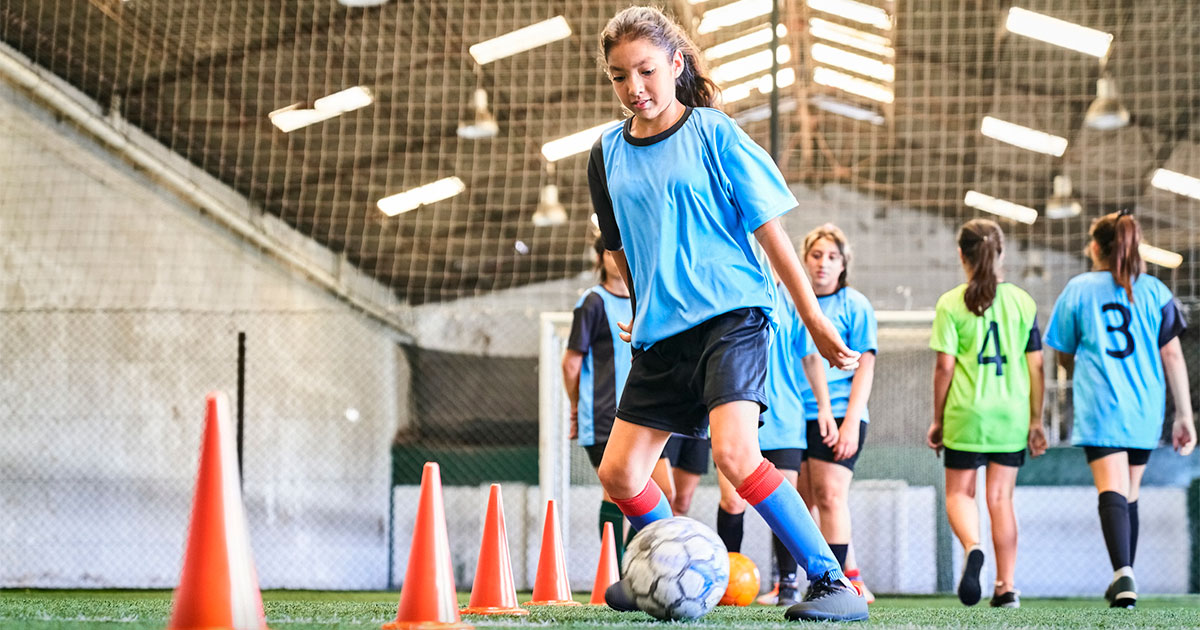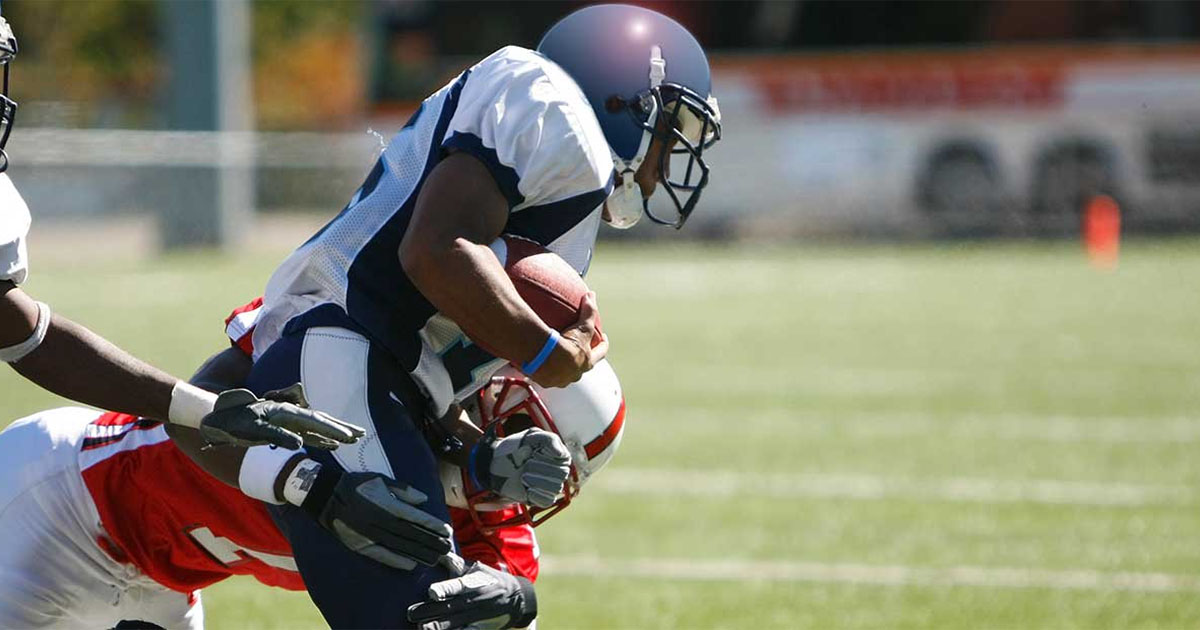Do Cleats Matter? The Answer Is Yes
Advice to improve your movement, fitness, and overall health from the world's #1 in orthopedics.
Pads and a helmet are important for football. Shin guards are crucial for soccer. A stick is needed for lacrosse. And the right cleats are imperative for all of them.

Many competitive field sports require a lot of running—but not just in a straight line. Athletes run back and forth, they zig zag, they speed up and they slow down. “These movement patterns, such as cutting or changing direction, require the athlete to accelerate in one way or another, which takes force. That begins with contact with the ground, whether it’s grass, mud, or field turf,” says Andrew Kraszewski, PhD, an engineer and scientist in the Motion Analysis Laboratory at HSS. In his research, Dr. Kraszewski studies how flexible cleats that bend and compress more than traditional ones change the friction between the shoe and the running surface. He also works with HSS sports medicine surgeons, including Karen Sutton, MD, to gather data from athletes and better understand how cleats and turf shoes change how the body makes cutting movements.
Cleats play a specific—and important—role in these sports, says Dr. Kraszewski. “You want to be able to outmaneuver and outplay the opponent, so physically, you want to be able to change velocity quickly, whether it’s speeding up or slowing down,” he says. “Cleats provide the ability to do that better by adding traction to move around on these surfaces, hopefully without injury.”
In general, shoes without cleats will reduce friction, which may lead to greater risk of slipping, and sometimes injury. “Slipping is usually an unexpected phenomenon, so when the muscles and soft tissues that stabilize the body are primed to go in a different direction, a slip can unbalance things and injury may result,” he says.
Not All Cleats Are the Same
When people refer to “cleats,” they typically mean shoes with spikes that are attached to the outsole of the bottom of the shoe. The spikes (sometimes referred to as “cleats” or “studs”) help grip the playing surface and can vary by shape, size, length, pattern and material, all of which will affect the grip your cleats have on the ground. Spikes can be metal, molded plastic or detachable. Shorter studs are likely better for playing on drier and firmer ground. Longer studs are typically used on wetter and looser ground where they can dig into the field and give the athlete better grip.
Additionally, cleated shoes have other features, including a low, mid, or high cut; the higher the cut, the more stability the shoe gives to the ankle. Shoes can also be heavier or lighter weight in construction, which determines how stiff or bendable they are.
Here, Dr. Kraszewski gives a breakdown of the best types of cleats for the sports that most commonly use them.
- Football cleats provide durability and movement plus protection. Because the game is played in short, high-intensity bursts, players need high traction. Football cleats can be heavier and have a stiffer outsole than soccer and baseball cleats so they can withstand repeated intense contact with the ground. Numerous aggressive studs give players added leverage and allow them to make quick cuts.
Preferences can vary among players, though. Different positions serve different purposes, so a lineman, for example, may prefer a high-top cleat, which provides more ankle stability during lateral (side-to-side) movements. A running back or wide receiver may prefer a low-cut cleat, providing greater agility on the field while performing cutting maneuvers.
- Soccer cleats are light and flexible because the players run up and down the field constantly, and they perform all kinds of quick, tricky ball-handling techniques. The shoes also have no toe cleats, which could be dangerous if players slide and collide with each other.
- Baseball cleats come with a toe spike intended to help players dig in while throwing, taking off from the bases, and running in dirt. Baseball cleats can differ depending on the position because players stand and run on different surfaces. Outfielders, who play on grass, might want metal blade studs, as they provide high traction. Pitchers might prefer a low-top cleat because of the motion and footwork this position requires. (Some leagues, particularly for younger players, do not allow metal cleats due to safety concerns.)
- Lacrosse cleats are similar to football cleats, with a toe spike in the center to help the player dig in while moving forward. The shoe itself is stiff, with aggressive studs for when the player changes direction or performs start-and-stop maneuvers on grass or turf. Turf shoes, which have many tiny rubber studs, are more similar to sneakers in comfort and commonly used during play on dry artificial turf.
Keep in mind that while online shopping is convenient, it’s usually better to try cleats on in a store so you can really get a feel for the shoe, particularly if the store gives you access to artificial turf or other playing surfaces. Don’t be afraid to test them out—jump around, run forward and backwards, cut from side to side, and do any motions you would during a game to make sure the shoe feels right for you.
Published 5/22/2023



